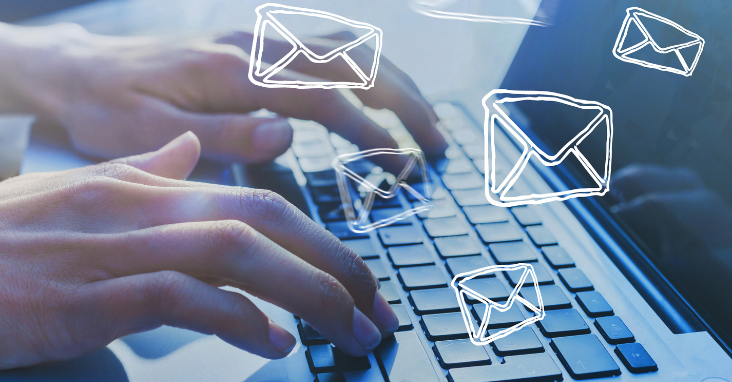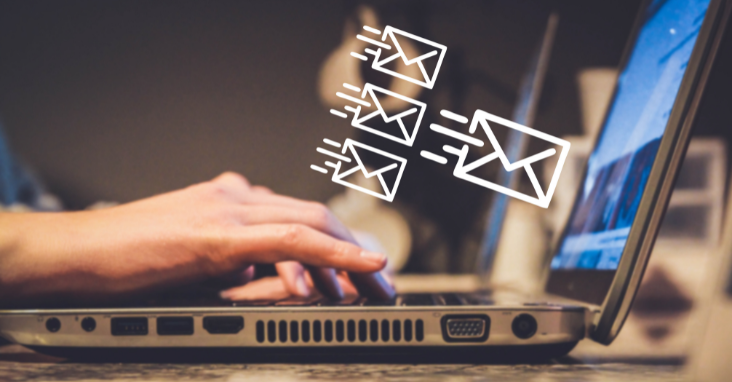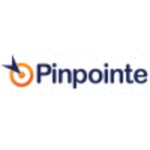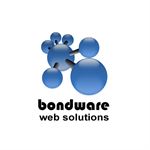When it comes to organizing meetings, sending out effective meeting invite emails is key to ensuring a successful gathering. Whether you’re arranging a first meeting link a small team meeting, a client presentation, or a company-wide conference, the way you invite participants can make a significant difference in their engagement and attendance. In this blog post, we’ll explore the art of crafting compelling meeting invite emails that grab attention, provide essential information, and encourage timely responses.
Key points in this section:
Effective meeting invite emails are crucial for successful meetings, more relaxed or formal meetings.
The blog post will focus on crafting compelling meeting invite emails.
The goal is to grab attention, provide essential information, and encourage timely responses.

Understanding the Basics of a Meeting Invite Email
Before diving into the specifics of crafting an effective meeting invite email, let’s start by understanding the basics.
A meeting invite email serves as a formal communication tool to invite participants to a scheduled meeting. It ensures that all meeting attendees will have the necessary information to join the meeting and understand its purpose and objectives.
To create a well-rounded meeting invite email, it’s important for successful meeting invitation emails to include key components that provide clarity and enable participants to make informed decisions. Here are the essential elements of a compelling meeting invitation email:
Subject line: A concise and informative subject line that captures the essence of the meeting and grabs the recipient’s attention.
Introduction and greeting: A warm and professional opening that sets the tone for the email and establishes a connection with the recipient.
Meeting details: Clear and comprehensive information about the meeting, including the purpose, topic, and any specific requirements or preparations.
Agenda and objectives: An outline of the meeting agenda, including the topics to be discussed, the order of presentation, and the desired outcomes.
Date, time, and duration: The specific date, start time, and expected duration of the meeting, allowing participants to plan their schedules accordingly.
Location and meeting format: The physical location or virtual platform where the meeting will take place, along with any instructions or links for accessing the meeting online.
RSVP and response options: A clear request for participants to confirm their attendance, along with the preferred method of response, such as replying directly to the email or using an online scheduling tool.
Additional information or attachments: Any supplementary materials, such as supporting documents, presentations, or background information, that participants may need to review before the meeting.
Key points in this section:
A meeting invite email is a formal communication tool to invite participants to a meeting.
Key components of a meeting invite email include the subject line, introduction, meeting details, agenda, date, time, location, RSVP options, and additional information.
These elements provide clarity and enable participants to make informed decisions about attending the meeting.

Crafting an Effective Meeting Invite Email
Now that we understand the essential components of a meeting invite email, let’s delve into the art of crafting an effective one. An effective meeting invite email should be clear, concise, and engaging, capturing the recipients’ attention and providing them with all the necessary information. Here are some key considerations when writing a successful meeting or invite email:
Choosing a clear and concise subject line: The subject line should accurately reflect the purpose of the meeting and be concise enough to entice recipients to open the email.
Writing an engaging and professional introduction: Start the email with a warm greeting and a brief introduction that creates a connection with the recipients and sets a positive tone for the invitation.
Providing clear and comprehensive meeting details: Clearly explain the purpose of the meeting, why the recipients’ attendance is important, and what they can expect to gain from attending. Be specific about any requirements or preparations they need to make.
Structuring an agenda and outlining objectives: Present a well-organized agenda that outlines the key topics to be discussed and the objectives you hope to achieve. This helps participants understand the meeting’s flow and purpose.
Including important logistics information: Clearly state the date, start time, and duration of the meeting. If it’s an in-person meeting, provide the location details. For virtual meetings, include the platform or link to join, along with any necessary instructions or meeting IDs.
Encouraging timely RSVPs and responses: Clearly communicate the importance of a timely response, and provide the preferred method of RSVP, whether it’s replying directly to the email or using an online scheduling tool. Make it easy for recipients to confirm their attendance.
Adding relevant attachments or supporting documents: If there are any relevant documents or materials that participants should review before the meeting, attach them to the email or provide links to access them.
Remember, brevity and clarity are key when writing a meeting invite email. Keep the meeting invitations focused and to the point, avoiding unnecessary information or jargon that could confuse recipients.
Key points in this section:
Craft an engaging and professional introduction.
Provide clear and comprehensive meeting details, including purpose and preparations.
Structure an agenda and outline meeting objectives.
Clearly communicate logistics information such as date, time, location (for in-person meetings), and platform (for virtual meetings).
Encourage timely RSVPs and provide response options.
Include relevant attachments or supporting documents for participants to review.

Best Practices for Sending a Meeting Invite Email
To ensure the effectiveness of your meeting request or invite email, it’s important to follow some best practices when sending it out. These practices will help you maximize engagement, increase response rates, and minimize any potential confusion. Consider the following guidelines:
Considerations for recipients’ schedules and time zones: Take into account the availability and time zones of your recipients when scheduling the meeting. Avoid scheduling conflicts and try to find a time that works for the majority of participants.
Ensuring accuracy and consistency in the details: Double-check all the meeting details, including the date, time, location, and agenda. Make sure there are no errors or conflicting information that could cause confusion.
Using polite and professional language: Maintain a professional tone throughout the email, using polite and courteous language. Remember to express gratitude for the recipients’ time and consideration.
Keeping the email concise and to the point: Respect the recipients’ time by keeping the email brief and focused. Use bullet points or subheadings to highlight important information and make the email easy to scan.
Formatting the email for readability: Use a clear and legible font, appropriate font size, and sufficient spacing to enhance readability. Consider using bold or italic formatting sparingly to emphasize key points.
Proofreading and editing before sending: Thoroughly proofread the email for any grammatical or spelling errors. Pay attention to the overall flow and coherence of the email. Consider having someone else review it before sending, as fresh eyes can often catch mistakes or provide valuable feedback.
By adhering to these best practices, you can ensure that your most successful meeting invitation email invite email is professional, error-free, and easy for recipients to understand and respond to.
Key points in this section:
Consider recipients’ schedules and time zones when scheduling the meeting.
Double-check the accuracy and consistency of meeting details.
Use polite and professional language throughout the email.
Keep the email concise and focused, using formatting for readability.
Proofread and edit the email to ensure it is error-free before sending.

Tips for Maximizing the Effectiveness of Meeting Invite Emails
Crafting an effective meeting invite and email template is just the first step. To further enhance the impact of your invitations and ensure high attendance rates, consider implementing the following tips:
Set a clear and specific meeting objective: Clearly define the purpose and objective of the meeting in the invite email. This helps participants understand the importance and relevance of attending, increasing their motivation to be present.
Include a well-structured agenda: Break down the meeting into a structured agenda with time allocated for each topic. This gives participants a clear understanding of what will be covered and helps them prepare accordingly.
Highlight the expected outcomes and benefits: Communicate the expected outcomes or benefits of attending the meeting. Whether it’s making important decisions, collaborating on a project, or gaining valuable insights, emphasize the value participants can derive from their participation.
Personalize the email for each recipient: Whenever possible, personalize the meeting invite email to make recipients feel valued and engaged. Address them by name and mention any specific contributions or expertise they bring to the meeting.
Send reminders and follow-ups, if necessary: If the meeting is scheduled far in advance, send a reminder closer to the date to ensure it remains on participants’ radars. Additionally, consider sending a follow-up email after the meeting to summarize key points discussed and any action items assigned.
Seek feedback and continuous improvement: Encourage participants to provide feedback on the meeting format, agenda, or any other aspects they found helpful or could be improved. This feedback can help you enhance future meetings and create a better experience for everyone involved.
By implementing these tips, you can maximize the effectiveness of your meeting invite emails, leading to higher attendance rates, greater participant engagement, and more productive meetings overall.
Key points in this section:
Set clear meeting objectives to motivate participants to attend.
Include a well-structured agenda to guide participants and aid preparation.
Highlight the expected outcomes and benefits of attending the meeting.
Personalize the email whenever possible to make recipients feel valued.
Send reminders and follow-ups to ensure meeting attendance.
Seek feedback to continuously improve future meetings.

Conclusion
Crafting effective meeting invite emails is essential for ensuring successful and productive meetings. By following the guidelines and best practices outlined in this blog post, you can create compelling invitations that grab attention, keep time and location, provide essential information, and encourage timely responses.
Remember to focus on clarity, brevity, and professionalism when writing your meeting invite emails. Clearly communicate the purpose, agenda, and date at time of, time, and any necessary logistics. Make it easy for recipients to respond and confirm their attendance. Personalize the email whenever possible, and consider sending reminders and follow-ups to ensure high attendance rates.
By mastering the art of crafting effective business meeting invite emails, you can increase participant engagement, promote collaboration, and ultimately achieve more successful outcomes in your meetings.
Thank you for reading this blog post, and we hope these tips and guidelines help you in your future next meeting email invitations!

Bonus Section: Email Templates
To provide you with practical examples, let’s explore two scenarios and corresponding examples of effective meeting room invite emails.
Example 1: Team Project Kickoff Meeting
Subject: Project Kickoff Meeting – Exciting New Venture!
Hi [Team],
I hope this email finds you well. I am thrilled to announce the kickoff of our exciting new project, [Project Name]. As a key member of the team, your participation is crucial. Here are the details for our upcoming project kickoff meeting:
Date: [Date]
Time: [Time]
Duration: [Duration]
Location: [Virtual Meeting Platform/Conference Room Name]
Agenda:
Welcome and Introductions
Overview of the Project Objectives and Scope
Roles and Responsibilities
Discussion of Key Milestones and Deliverables
Q&A Session
Next Steps and Action Items
Please review the attached project brief before the meeting, as it provides valuable context for formal meeting. We value your input and look forward to your active participation in shaping the success of this project.
To confirm invitation email and your attendance, please RSVP by [RSVP Date] by replying directly to this email. If you have any scheduling conflicts or questions, please let me know as soon as possible.
Thank you, and I’m excited to embark on this project journey together!
Best regards, [Your Name]
Key elements in this example:
Engaging introduction that highlights the excitement about the project
Clear and concise meeting details, including date, time, duration, and location (virtual or physical)
Well-structured agenda with clear topics and objectives
Request for RSVP and action items
Personalized and enthusiastic closing

Example 2: Client Presentation Meeting
Subject: Invitation: Presentation on [Topic] for [Client Name]
Dear [Client Name],
I hope this email finds you well. We are delighted to invite you to an exclusive presentation on [Topic] tailored specifically for [Client Company]. This presentation aims to provide valuable insights and solutions to address [Client Company]’s [specific needs/challenges]. Here are the full date and time details for the meeting:
Date: [Date]
Time: [Time]
Duration: [Duration]
Location: [Virtual Meeting Platform/Conference Room Name]
Agenda:
Introduction and Welcome
Overview of [Client Company]’s Needs and Challenges
In-depth Presentation on [Topic], including industry trends and best practices
Demonstration of Relevant Solutions and Case Studies
Q&A Session and Discussion
Next Steps and Potential Collaboration Opportunities
Attached to this email, you will find a brief agenda overview for your reference. We are confident that this presentation will provide valuable insights and actionable recommendations for [Client Company name].
To secure your spot, please RSVP by [RSVP Date] by replying directly to this email. Should you have any questions or require further information, please do not hesitate to reach out.
Thank you, and we look forward to welcoming you to our next meeting after this informative and engaging presentation.
Best regards, [Your Name]
Key elements in this example:
Personalized introduction addressing the specific needs of the client
Clear and concise meeting details, including date, time, duration, and location (virtual or physical)
Detailed agenda that outlines the flow of the presentation
Emphasis on the value and benefits the client will gain from attending
Request for RSVP and action items
Professional and courteous closing
Remember to adapt these examples to your specific context and use them as a starting point to craft your own compelling first meeting invitation and invite emails.















